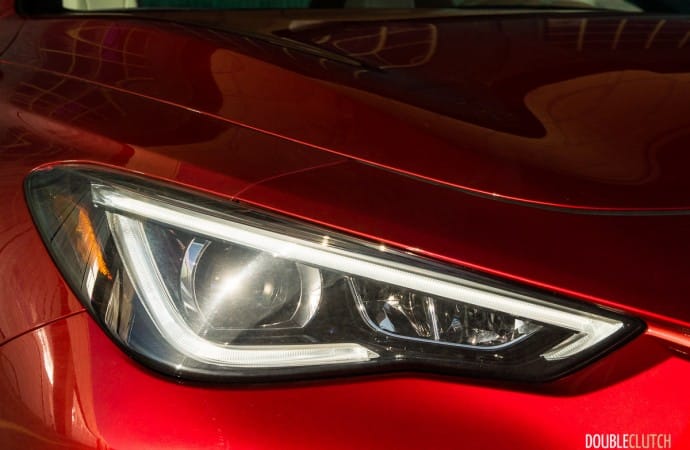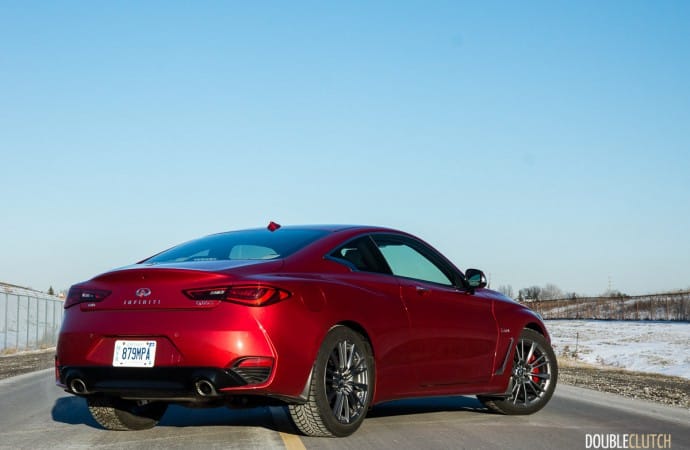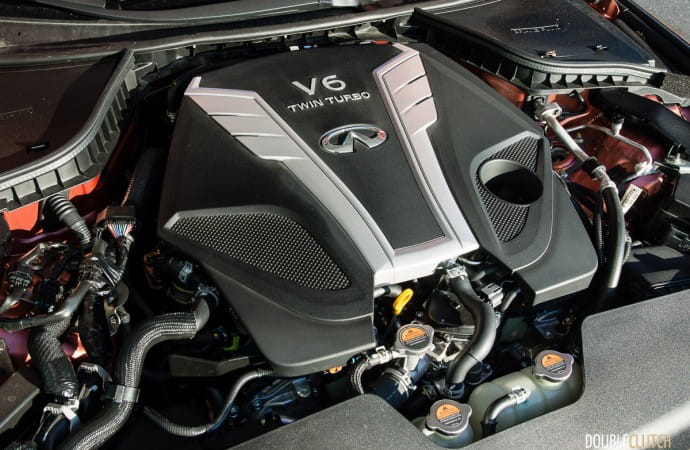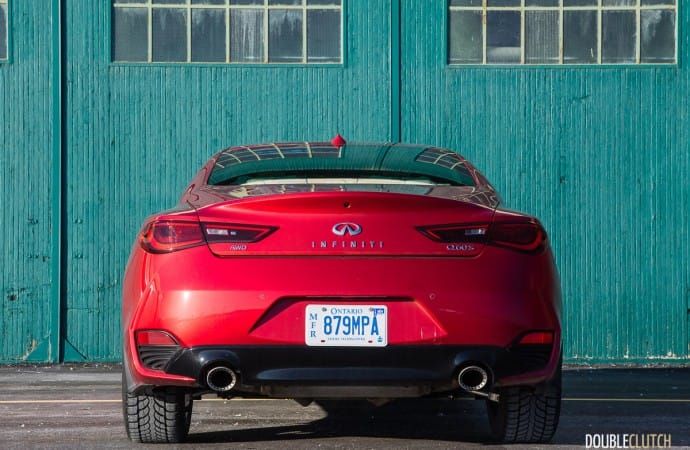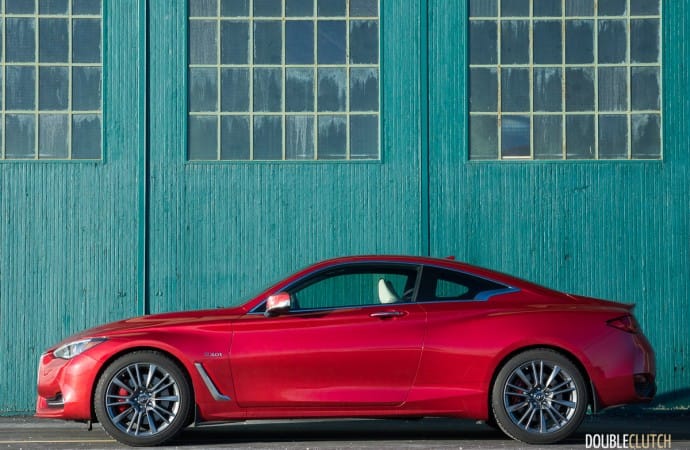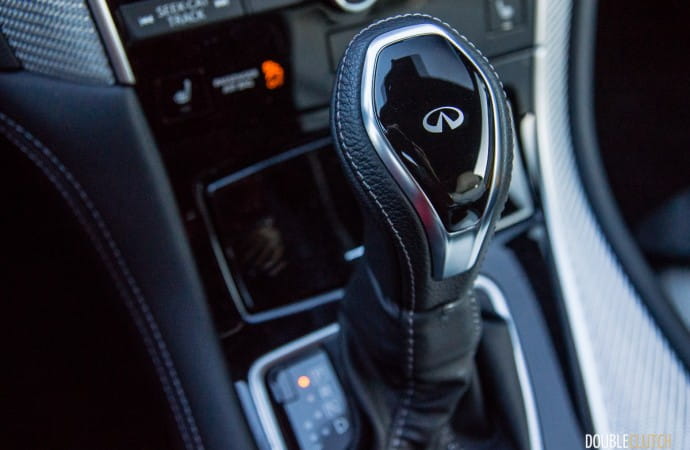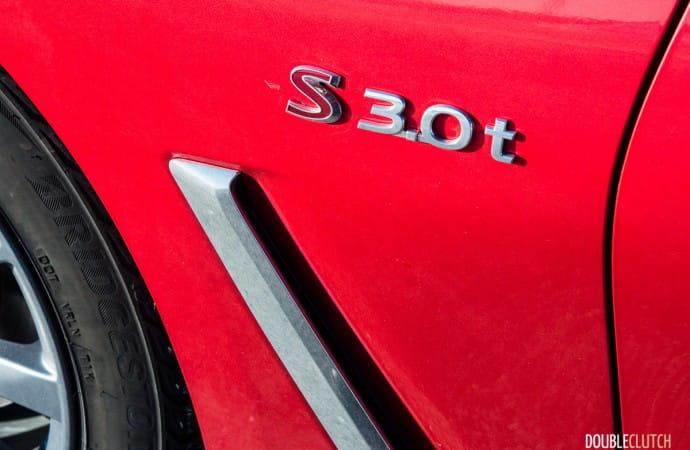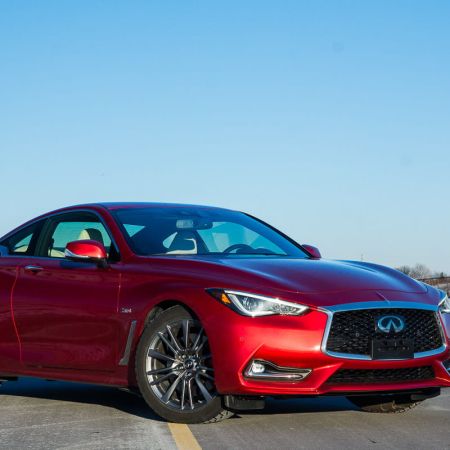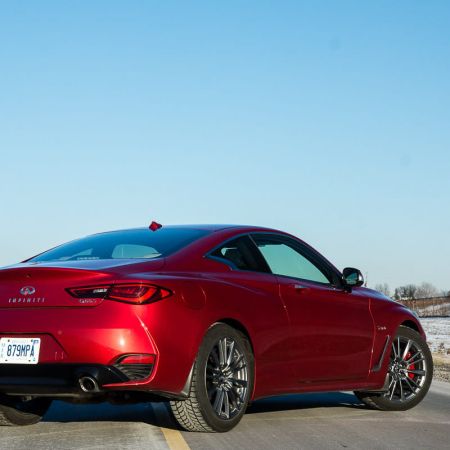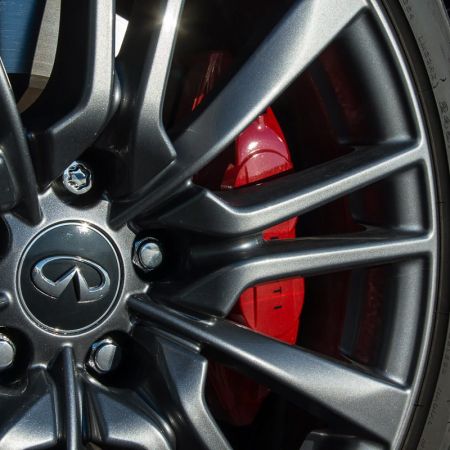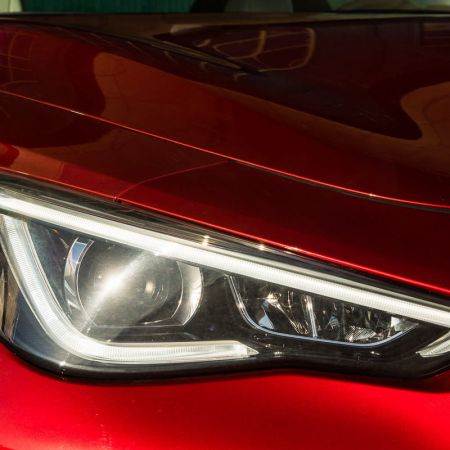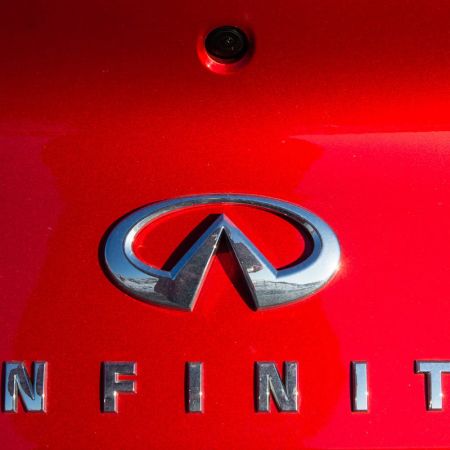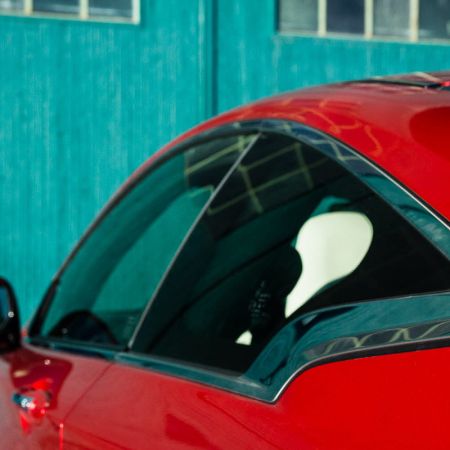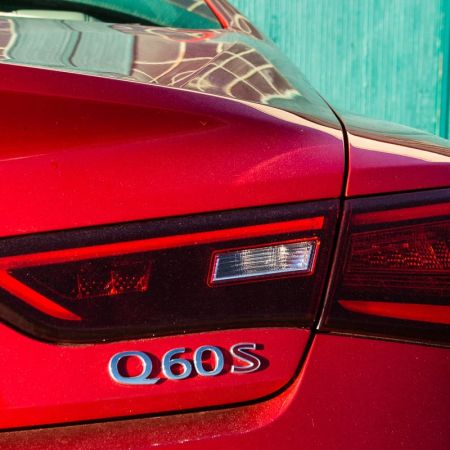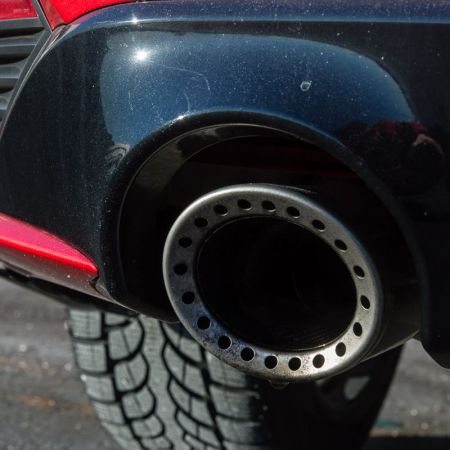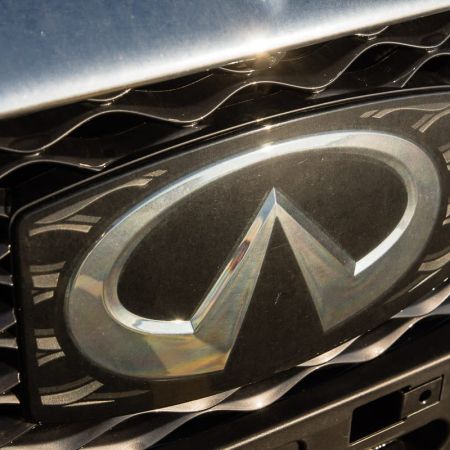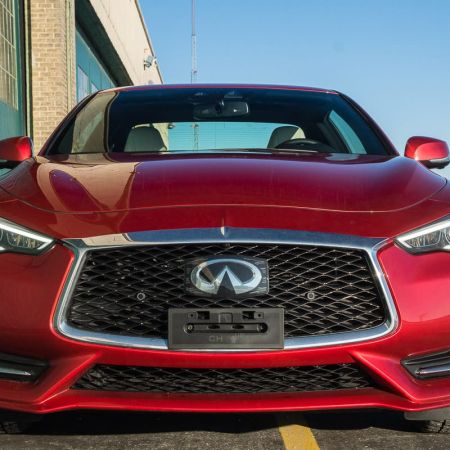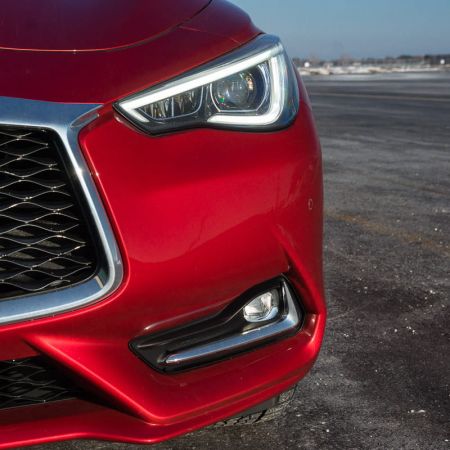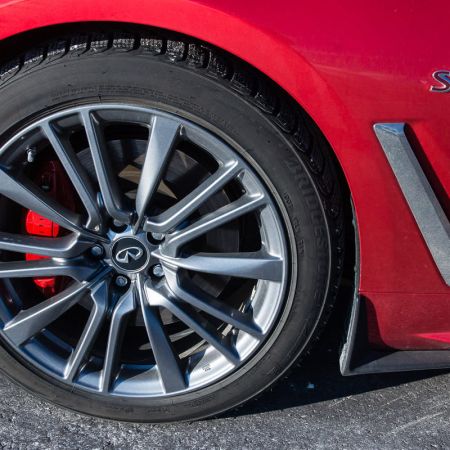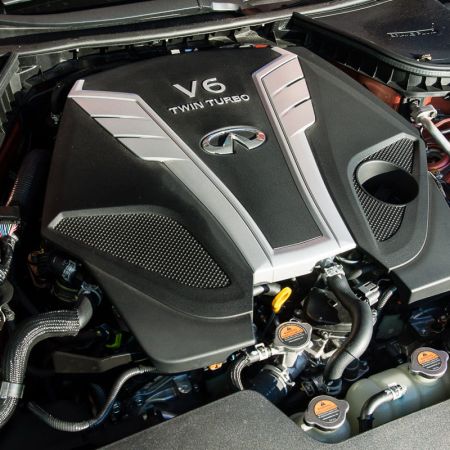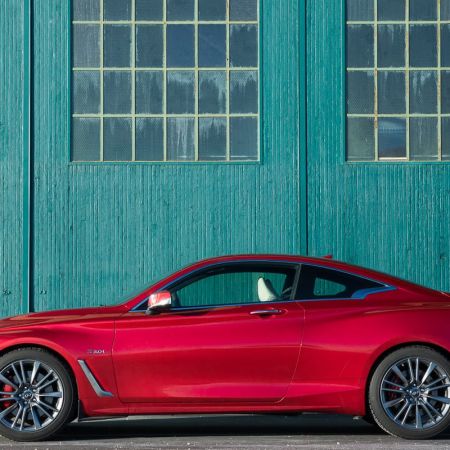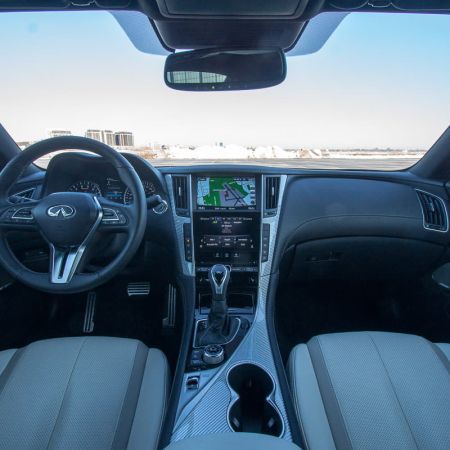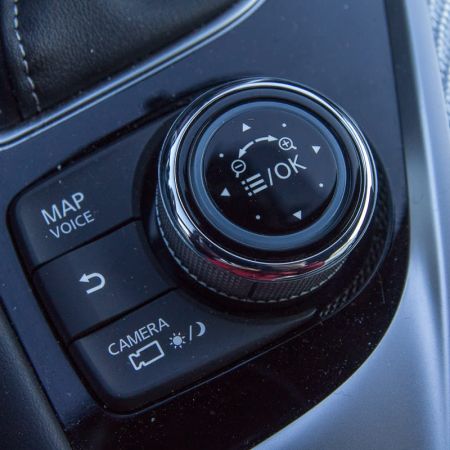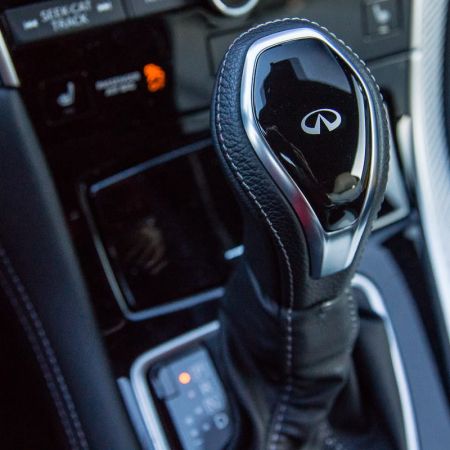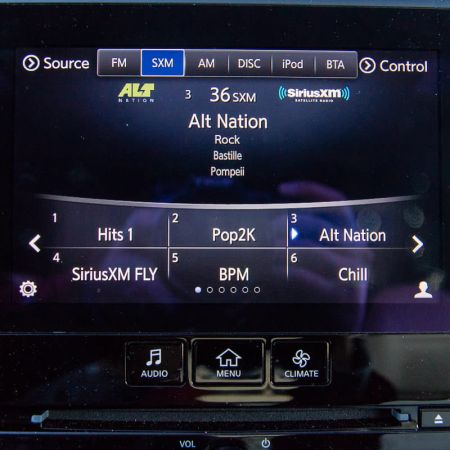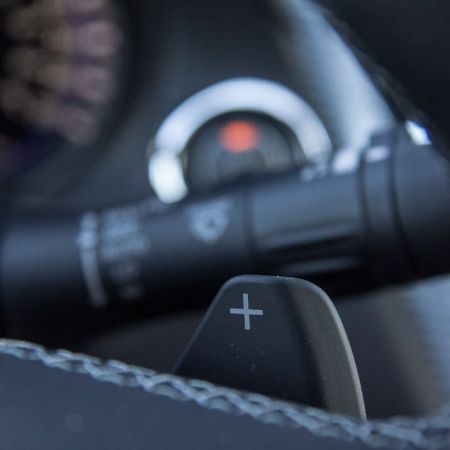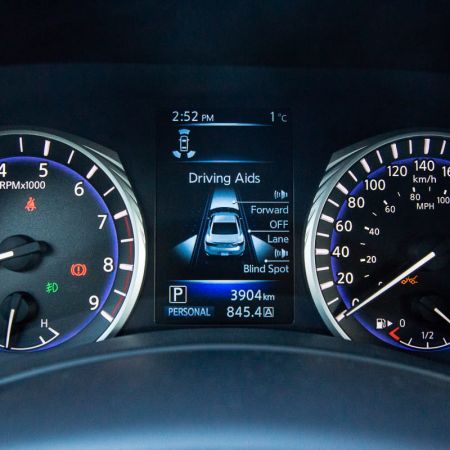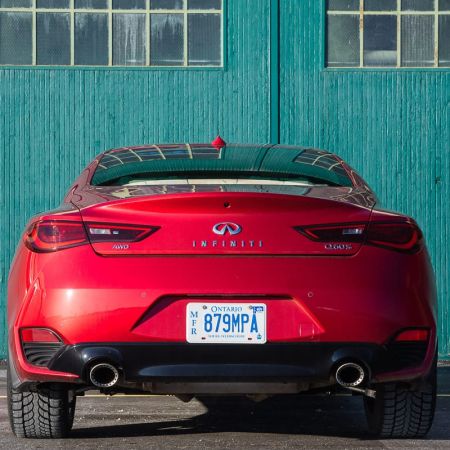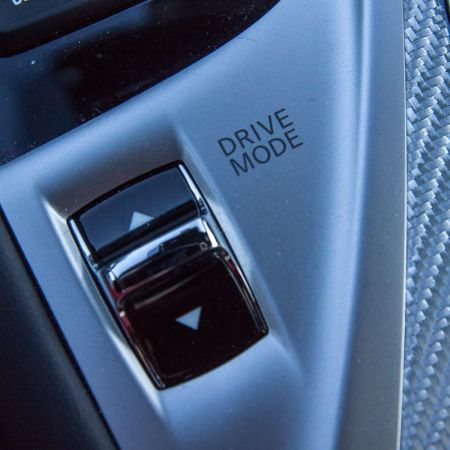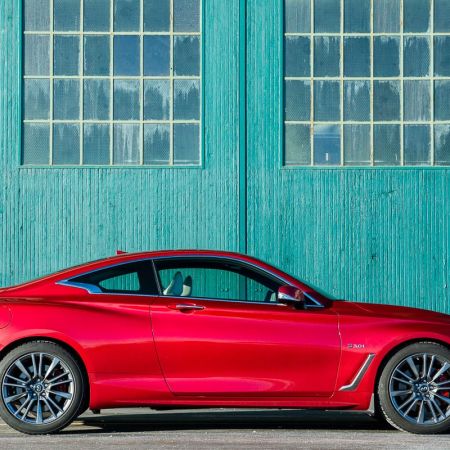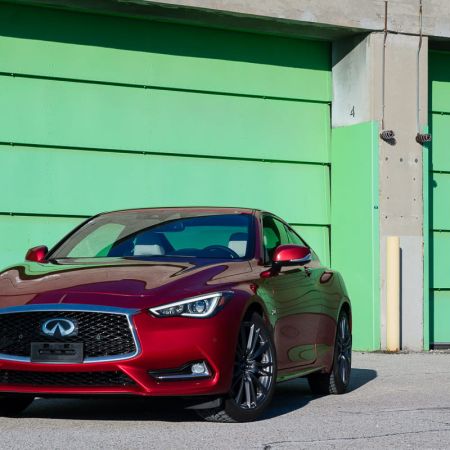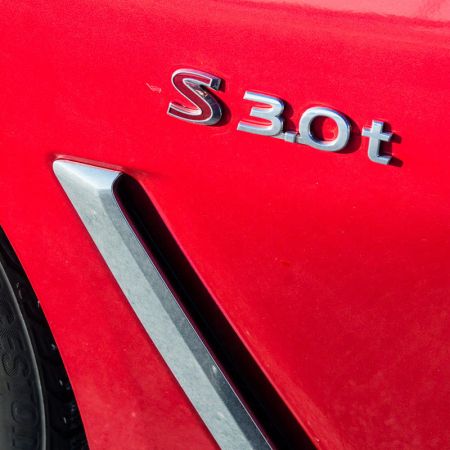The Infiniti G35 was immensely popular back in the day. Introduced in 2001, both sedan and G coupe delivered on a simple and effective formula: six-cylinder engine up front, power sent to the rear wheels (or optionally, all four wheels), and an ideal weight distribution of around 50/50 front to rear. Compared to the E46-generation BMW 3-Series of the time, the Infinitis would offer more engaging styling (subjective, of course), and a lot more horsepower from their big 3.5L twin-cam V6s. The second-generation Infiniti G would become the G37, owing to its larger 3.7L V6. As mentioned earlier, the competition doesn’t ever sit still – as such, the Infiniti G would eventually languish on dealer lots as the rest of the segment passed them by.
The Infiniti Q50 (reviewed here) came along for the 2014 model year, and it signalled the new way going forward, as it was the first sedan using the new corporate naming scheme. To this day, it remains an attractive sedan, with nicely sculpted lines and that “Crescent window” shape that makes up the C-pillar design. This particular styling feature apes the BMW Hofmeister Kink somewhat, but Infiniti puts its own spin on it.
The new kid on the block is the Infiniti Q60. Announced for the 2017 model year, it’s not a car that’s higher-up on the totem pole than the Q50 – it’s a new sports coupe that is (roughly) sold alongside it. Trim overhangs keep the car’s overall size and impression small (it’s shorter than the Q50 by almost 10cm). Even at first glance, the Q60 doesn’t quite look like a two-door Q50. With a different front grille, different taillights, and that trademark Crescent window, the Q60 is a handsome coupe with (subjectively) clean lines. The big update (also extended to the Q50) is a new twin-turbo V6 engine, seen in the 2017 Infiniti Q60 Red Sport 400 – denoted by the red “S” logo on the front fender. I picked up the keys to one, painted in a vivid shade of red, called “Dynamic Sunstone Red Tinted Clearcoat” for a weeklong evaluation.
Putting the Infiniti Q60 beside other luxury coupes is a way to suss out personal preferences. The BMW 4-Series (reviewed here) comes to mind, and its latest refresh has helped clean up the front-end a little bit. The Lexus RC is not to be discounted, but its polarizing styling may not work for everybody (myself included). The Mercedes-Benz C Class Coupe is traditionally handsome, and actually shares some unexpected DNA with the Infiniti. Audi’s A5 Coupe hasn’t quite arrived yet, but styling-wise, it looks to be an evolution of the extremely-successful previous generation model. To that end, the Infiniti Q60 is a classically handsome coupe that treads a somewhat more conservative line than some of its competitors. The way the deep pearl red paint and all the body contours reflect light is very flattering on a freshly-washed car.
Inside, the Infiniti Q60 gets an interior largely borrowed from the Q50 sedan. What this means is lots of soft-touch leather everywhere, and the two-tone white leather seats and the composite carbon-look (“silver optic fibre”) plastic. The centre stack is dominated by a two-screen solution – both of which are touch-enabled. The upper screen takes care of navigation, and the lower-screen contains mostly infotainment and the multitudes of vehicle options you can fiddle with. Typical of a luxury sports coupe, the rear seats are not impossible to sit in, but for anybody taller than 5’8”, your head will be pressing into the rear glass. If you’re looking for second-row headroom, the Infiniti Q60 isn’t the option for you. What’s slightly interesting is that Infiniti’s Canadian website says you get magnesium paddle shifters, and in usual Nissan/Infiniti fashion, they are typically attached to the steering column, rather than the wheel itself. What you get, instead, are plastic paddle shifters attached to the steering wheel.
The more exciting news is the new powertrain lineup to power the Q60. The outgoing Nissan VQ-series V6, while it delivered very flexible high-revving power, it was starting to get left-behind by the new forced-induction engines now seen across the industry. Starting with the engine seen in the Q60 2.0t: a 208hp 2.0L turbo-four engine sourced from Mercedes-Benz, similar in design (but not horsepower) to the unit seen in the C 300 and E 300 sedans (basically, anything with the “300” nomenclature). Next up is the all-new VR30DDTT 3.0L V6 of Infiniti’s own design. It shares some similarity to the V6 found in Nissan’s GT-R supercar-killer.
Featuring turbocharging, direct injection, water-to-air intercooling (better for reducing turbo lag, as opposed to the more popular air-to-air setups), and electronic wastegate control, this new V6 comes in two tunes: 300hp and 400hp. The Q60 Red Sport 400 tested here comes with the latter, putting out that 400hp at 6400 RPM, and 350lb-ft of torque from a useful 1600 RPM all the way up to 5200 RPM. The 400hp version of the VR30DDTT adds a second water pump to better deal with the increased thermal loads associated with pumping more turbocharger boost into the engine, and it also gets a “turbo optical control speed sensor” which provides finer control of how fast the turbos spin.
All three engines remain paired up with the corporate Nissan/Infiniti 7-speed automatic transmission. While it’s also a bit long in the tooth, the latest calibration it receives makes it the best version of this transmission I’ve seen so far. Gear shift quality is quick and firm, and it makes full use of the generous torque curve and will avoid downshifting if it’s not quite necessary. It’s still not quite as sweet as the ZF 8HP 8-speed automatics seen elsewhere in the industry, but Infiniti did a good job here. The V6 is especially flexible, pulling strong to redline, and while it sounds decent for a V6, it doesn’t have the sonorous song that the naturally-aspirated VQ V6 did. Power is sent to all four wheels – AWD is standard equipment in Canada. 255-section tires riding on 19-inch wheels are included with the Red Sport 400.
When you opt for the “Dynamic Sunstone Red Tinted Clearcoat”, the $3,200 Technology Package automatically gets tacked on. The Q60 Red Sport 400 already includes the Driver Assistance Package and the Premium Package, and the Technology Package adds items like adaptive headlights (with high beam assist), adaptive radar cruise control (with cleverly-hidden sensor in the front Infiniti badge), blind spot monitoring – and Direct Adaptive Steering (or DAS). Steering systems in the past have evolved from zero assistance (also known as manual steering), to hydraulic assist (with fluid and pumps), to electric assist (with electric motors), and now a completely autonomous system by Infiniti. The biggest difference is that there’s no longer any direct mechanical connection from the steering wheel to the wheels on the ground. It takes data from the steering wheel and steering force actuator, sending it to various computers, which sends it to a steering angle actuator, which actually moves the steering rack that is connected to the wheels.
There are a number of supposed benefits: more isolation from road imperfections, and the lane departure alert and intervention system is more effective, as it doesn’t have to deal with as much hardware before it can work its magic. One other benefit is the ability to vary the steering ratio, on demand. The default electric steering rack in the standard Red Sport 400 is geared to about 15.0:1, whereas the DAS system can operate in a range of 11.86:1 all the way to 31.05:1. In other words, the steering ratio can either be very fast (less turns of the steering wheel to turn the actual wheels), or very slow (more turns of the steering wheel required).
How you can experience this immediately is to toggle into one of the Sport or Sport+ driving modes on the centre console. The steering ratio quickens considerably, but not only that, the “dead zone” in the centre of steering travel becomes almost zero, making for a somewhat twitchy car. If you like your steering response to be, “RIGHT NOW”, Direct Adaptive Steering might be able to give you the “race car” feeling you’re looking for. Personally, I had to dial some of the steering response back for everyday use – the steering in its most aggressive setting was a little too frantic to allow the driver to relax behind the wheel.
Direct Adaptive Steering is a great idea when you’re looking to increase the amount of isolation to occupants, but it’s really not a great idea if you’re looking to increase driver enjoyment in a sports car. Electric power steering systems are still criticized (for the most part) because they dull the little details from the road surface. As time goes by, and engineering gets better, electric power steering has definitely gotten better from the early days. In the pursuit of improved efficiency, it’s unlikely that hydraulic-assist systems will return, but there has to be something said about not fixing something that isn’t broken. The downside to how Infiniti has structured their option packages forces you to get Direct Adaptive Steering if you want all the goodies in the Technology Package. There was some talk about separating out DAS, and making it a stand-alone option, but this appears to only be possible in the United States as of this writing.
Part of the push towards smaller displacement engines coupled with forced induction is the idea of achieving reasonable efficiency, but still retaining the bigger power numbers that actually sell cars. The 400hp V6 puts down numbers that rival V8s of only a few years past; the 5.0L naturally-aspirated V8 seen in the Infiniti FX50/QX70S boasts similar numbers, but you can bet that the V6 will be a lot more frugal on fuel. Infiniti rates the Q60 Red Sport 400 at 12.5L/100km in the city, 9.2L/100km on the highway, and 9.2L/100km in a combined cycle.
During a wintry and cold December, I was only able to manage 11.9L/100km over a good mix of city and highway driving. Infiniti specifically recommends 93-octane fuel for best performance, and in typical Nissan/Infiniti fashion, the tank will hold 80L of it. There is no start-stop system on V6-equipped models, but there’s an “ECO pedal system” which tries to help improve efficiency by increasing the force needed to depress the accelerator pedal. It’s an interesting idea, but I found it more effective to just drive smoothly, so I turned the Eco pedal off for most of the week.
The Infiniti Q60 starts at $45,990 for the base 2.0t AWD trim. It comes decently well-equipped, with a standard power sunroof, LED headlights, 19-inch wheels, keyless access, and a rear-view reverse camera. What’s unique is that Infiniti will allow you to equip every single option package, even with the base 2.0t engine. For those who are looking for features rather than horsepower, this isn’t a bad way to do it. Stepping up to the $52,990 Q60 3.0t gets you the 300hp V6 engine and makes the Premium Package standard (Bose audio, heated steering wheel and front seats, satellite navigation). The $60,990 Q60 Red Sport 400 gets you more horsepower, and makes the Driver Assistance Package. The vehicle as-tested was also equipped with the Technology package, bring it to a subtotal of $65,190.
Infiniti has been a long-time value player in most of the segments they participate in. The Q60 Red Sport 400, as equipped, continues that tradition. Pricing out a comparable BMW 440i xDrive or Mercedes-Benz C 43 4MATIC Coupe sees the price quickly reach the $70,000 mark. A fully loaded Lexus RC350 F-Sport AWD (reviewed here) undercuts the Q60 Red Sport 400 by a few thousand dollars, but it is also down on horsepower. Cadillac’s ATS 3.6L Coupe is another underdog, with an excellent chassis and road feel, but it too is outgunned by the big horsepower players in this group.
The 2017 Infiniti Q60 Red Sport 400 does a mostly good job in this very competitive field of players from all around the world. The high points are the muscular powertrain – the engine and transmission do a great job delivering big torque, smoothly. The overall exterior design is also very attractive and (subjectively) right up there with the Mercedes-Benz C Class Coupe. I wasn’t a huge fan of the Direct Adaptive Steering system, and the updates it got when the Q60 was released still doesn’t quite convince me, which is why it’s a little unfortunate that you’re forced to get DAS with the Technology Package. To sum up, the Q60 Red Sport 400 is a fast and handsome player that just needs a little bit of package reshuffling in order to really deliver on its high-value strengths.
2017 Infiniti Q60 Red Sport 400 Gallery
See Also:
2017 Mercedes-Benz C 300 Coupe

